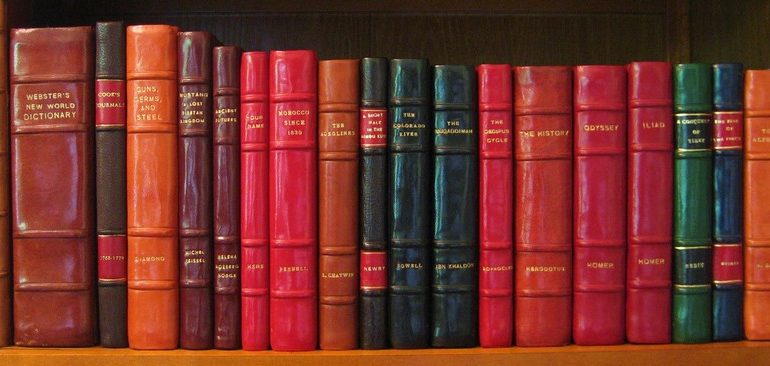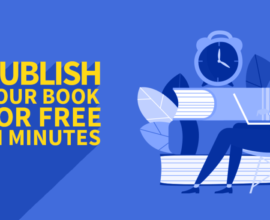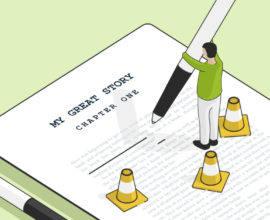How to Choose the Right Size and Binding Type for your Book?
Choosing a book size is one of the many decisions you would take in the journey of self-publishing. The size you choose for your book plays an important role in creating an impact among your readers. If your book is big and too heavy, readers may find it difficult to hold it for long and read; on the other hand, if your book is small and light, it may lose its durability. So, there is a lot of science that goes into choosing the size and binding type for your book. Here, we’ll help you choose one.
Book Size or Trim Size?
Book size is actually known as trim size. The reason it’s called trim size is because the book, after it gets printed, is larger than its actual size. It is then trimmed according to the size of your choice and hence the jargon.
Different Trim Sizes for Different Book Types (Given in Width X Height)
Trade Paperbacks
This is one of the most common trim sizes for self-published books. They are often in the size range of 6” X 9”, 5.5” X 8.5”, and 5” X 8”. The sizes are good for publishing novels and memoirs, short story anthologies, and novellas.
Non-fiction
If it is a non-fiction that you want to publish, the ideal sizes for your book would be either 6” X 9” or 5.5” X 8.5”. However, 6” X 9” is a popular trim size of non-fiction books published in the market today. If more space is required for your non-fiction to include photos, tables, charts, and other visual elements, you can prefer the size 7” X 10”.
Art Books & Children’s Books
For an art book, the suitable size ranges are 9” X 10”, 8.5” X 11”, and 8” X 10”. The largest size mentioned are best suitable for books that are intended to be portfolios, cook books, or coffee-table books. For children’s books, the appropriate sizes are 8” X 10” and 7” X 10”. You can choose a size depending on the size of the illustrations and images involved in it.
Which Trim Size should you choose?
Choosing a size for your book depends on a lot of factors such as the genre of your book, your target audience, the word-count, and more. From a business perspective, you should consider the production cost involved as well. Every trim size has its own production cost and the size of your book should also depend on your investment’s ROI. If it’s too exotic and unique but garners little sales, you would end up losing your investment. So, price plays a crucial role in selecting the trim size as well.
A lot of self-published books, I know, are of the size range 6” X 9” or 5” X 8”. Readers find the sizes comfortable and the sizes are found to provide a good reading experience. They are perfect for both fiction and non-fiction. If you feel you want to stick to the market standards, you can choose the size mentioned above. Or if the classifications above have helped you realize what you want, you can choose a size accordingly.
Choosing the Binding type for your Book
Choosing a binding type for your book is another stage in self-publishing where you may feel a little confused. A number of authors have asked me if they should prefer paperback or hardcover for their books. Well, the answer is pretty subjective and it depends on the genre and other aspects of your book. I’ve tried differentiating paperback and hardcover binding, so you could make a choice depending on your book and its content.
Hardcover
- They are durable and have a longer shelf-life than paperbacks.
- They look really pleasing to readers and make a great gift.
- Cost of production involved is high. So, they are more expensive than paperbacks.
- They attract readers to pick your book up when placed on bookshelves.
- Use it if what you’re writing is for reference purposes or is a guide.
Paperbacks
- They are cheaper than hardcover cases.
- Readers are generally comfortable with reading a book with paperback cover.
- They do not last as long as hardcovers.
- Probably the most preferred binding type.
- They are easier to carry.
Personally, I would suggest paperback if your book is a novel, an anthology of short stories, a poetry book, memoir, and the likes and hardcover if you’re writing a reference guide, an academic book, a coffee-table book, cook book, or an art and illustration book.
Also, consult the designer of your book and get their suggestions. They would be able to suggest the right size for your book after taking into considerations aspects like line-spacing, font size, and the likes. Remember that there is no hard-and-fast rule in selecting the size and binding type for your book. These are just conventions prevailing in the market and it is up to you take the final call. It’s your book and you’re the investor.





